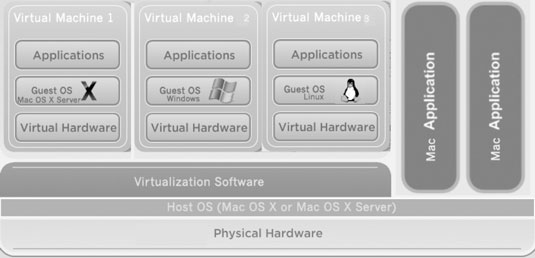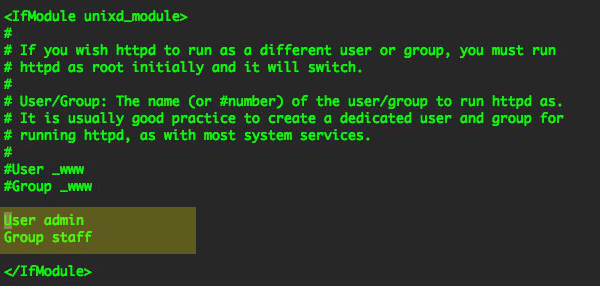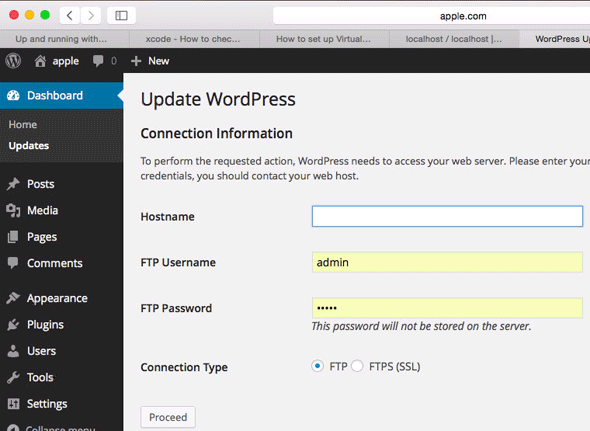
- #MACOS SERVER VIRTUAL HOSTS INSTALL#
- #MACOS SERVER VIRTUAL HOSTS PRO#
- #MACOS SERVER VIRTUAL HOSTS SERIES#
- #MACOS SERVER VIRTUAL HOSTS MAC#
#MACOS SERVER VIRTUAL HOSTS INSTALL#
Press the “Add…” button to install an Extras package.
#MACOS SERVER VIRTUAL HOSTS PRO#
With MAMP PRO Extras you can install a content management system in just a few clicks. This can be accessed via the menu “Tools -> Open Permissions Panel…”. You can change the permissions of the selected document root using the permissions panel. For this reason we strongly advise againt doing this. Important: Please note that there will be problems if you use an alias (symbolic link) as document root that points to “/Applications/MAMP/htdocs” folder. When you do this, your host data is separated from the MAMP PRO application data. A better location for your document root folders would be “~/Sites/”. Note: Do not create document root folders under your “/Applications/MAMP” folder. The location of the documents (HTML/PHP files etc.) of a virtual host is called a document root. The general settings for the ports can be found here.ĭetermine which web server will be used with your host. In most cases the preset value does not need to be changed. If you want to choose which of the IP addresses should be associated with a host, then select it from the pop up menu.ĭetermine the port with which the virtual host is accessible. If this field is left empty or contains an * the web server will use one of the computer’s IP addresses to access this host. To be able to select a value from this select box you must activate the checkbox “Include Dynamic DNS service to GroupStart” in the area “Dynamic DNS” (Servers & Services) and enter your account data in one of the services offered. To show the configuration of the currently selected PHP version click on the arrow button to the right of the select box.ĭetermines, if this virtual host is accessible with the Dynamic DNS service from the internet. If you set the PHP version in the PHP section to “7.0.33”, MAMP PRO will adapt the PHP version of HostA to this version (it is set to always use the standard version). You have HostA set to PHP version “Default (7.4.5)”, HostB set to “7.3.17” and HostC set to “5.6.40”. Use a fixed setting to tell MAMP PRO not to alter the PHP version.Īn example: The default version is set to 7.4.5. If you select the default PHP version MAMP PRO will automatically adapt this setting if you choose a new default version in the PHP tab. Here you select which PHP version should be used for the host. The “Open in” button allows you to open the host’s website in a specific browser. This button is only active when the servers are running. To open your new host in your default browser, click on the “Open” button to the right of the host name field. The name of a host can be up to 254 characters long. The host name may only contain letters and/or numbers, as well as dashes (“-“) but it may not begin or end with a “-“ character. The unreversed name may conflict with an outside domain name. Often it’s practical to use a reverse domain naming scheme to easily identify them (e.g. "Documents" or "Movies" etc.The server name and port number in combination must be unique within MAMP PRO.
#MACOS SERVER VIRTUAL HOSTS MAC#
If it needs to be, give "Read Only" access to "Everyone" on Mac for that particular folder, E.g. You MUST make sure that your DocumentRoot is not inside any documents your user explicitly owns.This guide already includes the fixes implemented, but in-case you still get permission errors: Once your Virtual Host has been edited to your liking you are done, just restart Apache and enjoy. Options Indexes FollowSymLinks Includes ExecCGI

Require all granted # Required for permission errors ServerAlias DocumentRoot " SERVER-FILE-ROOT " # E.g. # Change the 80 to the number Apache2 "Listen"s on.


Listen 8080 - Default is 80 Step 2: Edit your /etc/hosts file to spoof your loopback address, 127.0.0.1 127.0.0.1 localhostġ27.0.0.1 some.example # domain-name.domain-TLDġ27.0.0.1 # The same as the above line, but with www.
#MACOS SERVER VIRTUAL HOSTS SERIES#
This will be the case for this series of instructions. Make sure you specify what port you want to listen on, for me I specified 8080.


 0 kommentar(er)
0 kommentar(er)
